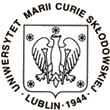

 |
 |
 |
|
Ken-ichiro Arita
NIT, Nagoya Shell structures and periodic orbit bifurcations in deformed nuclei, dependence on surface diffuseness and the effect of spin-orbit coupling
Shell structures in 3 dimensional deformed potentials are investigated using periodic-orbit theory. It is well known that the mean field potentials of atomic nuclei (and metallic clusters) are of Woods-Saxon type (with LS coupling for nuclei). In place of Woods-Saxon potential, one can use a potential whose radial dependence is r^\alpha, where \alpha is positive parameter greater than 2. It provides us a rather good approximation to the low energy spectrum of Woods-Saxon model. The most important advantage of r^\alpha potential model is the scaling property which makes the semiclassical analysis quite simple. In the first part, I would like to discuss the shell structure of deformed states using r^\alpha potential model. The superdeformed shell structure is usually discussed with harmonic oscillator model, and recently with cavity model (by our group). These tow models are two integrable limits (\alpha\to 2 and \alpha\to\infty) of r^\alpha potential model. In each case, emergence of periodic orbits play essential roles in significant deformed shell effects. In r^\alpha model, we found that, with increasing values of parameter \alpha, new periodic orbits appear which bridge the short and long diametric orbits. They emerge from short diameter at certain deformations before the crossing points of the actions of short and long diametric orbits, and then absorbed in long diameter at certain deformations after the crossing points. The parameter range for those orbits to exist becomes wider as the parameter \alpha increases. This makes the degree of deformation for superdeformed states smaller for larger \alpha, namely for larger N (number of constituent particles), which matches the experimental trends In the last part, I will discuss the roles of spin-orbit coupling. In order to examine classical-quantum correspondence, we define the classical Hamiltonian using classical spin canonical variables derived with spin coherent state path integral method. In this method, spin is described by a pair of conjugate variables and free from adiabatic approximations in contrast with WKB method. We calculate periodic orbits in this 4 dimensional system and found 4 dimensional orbits, where spin motions are coupled with the 3D ordinary orbital motions. Many of them can exist only in small ranges of energies, but some of them survive for any large energy. We investigate their roles in deformed shell structures using Fourier transformation technique.
| ||
Last modificated: 2003-09-22

